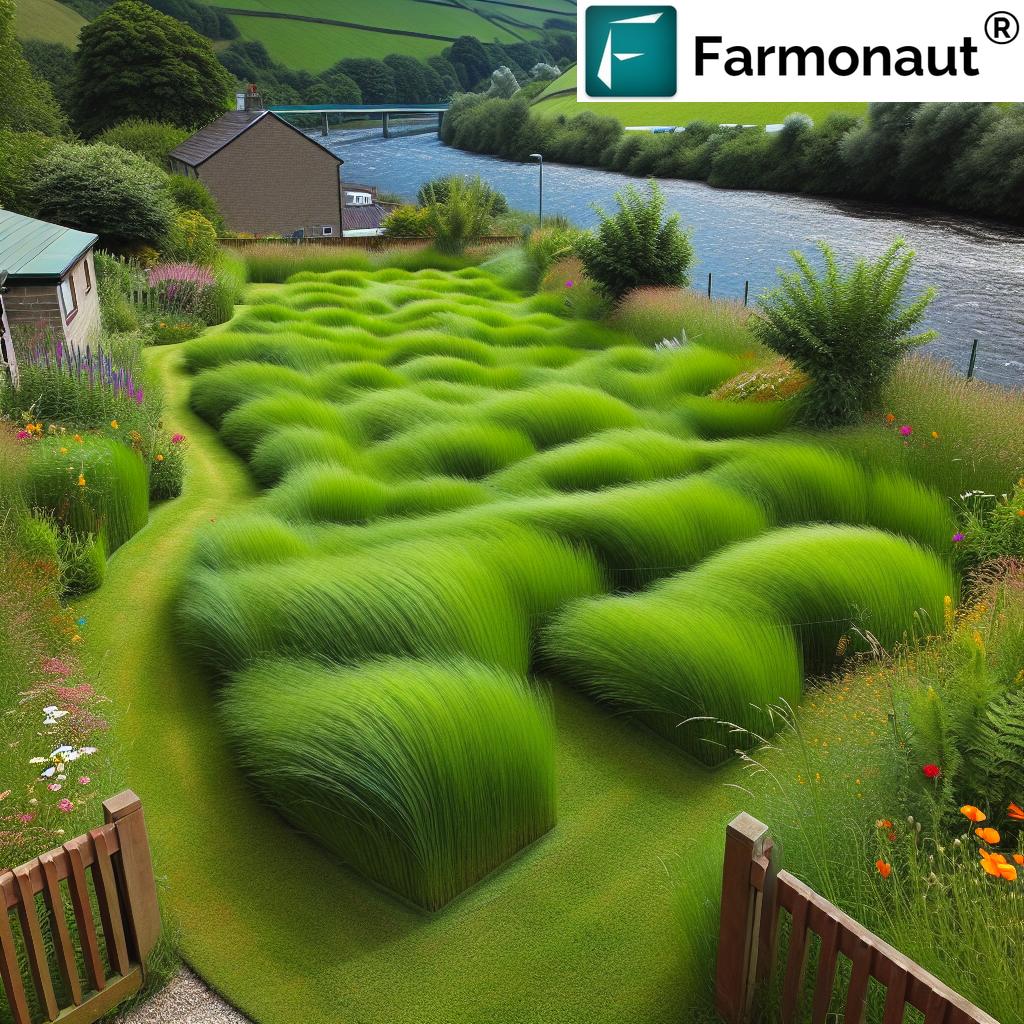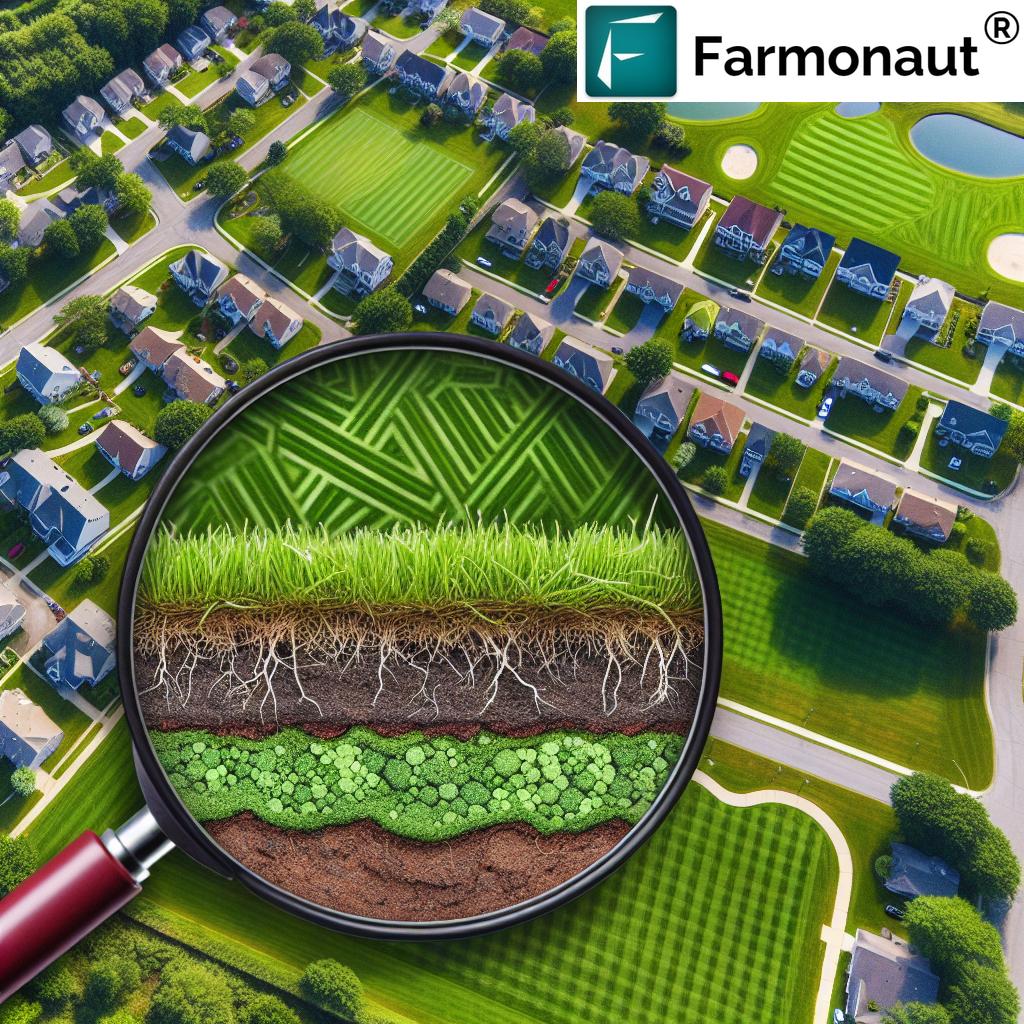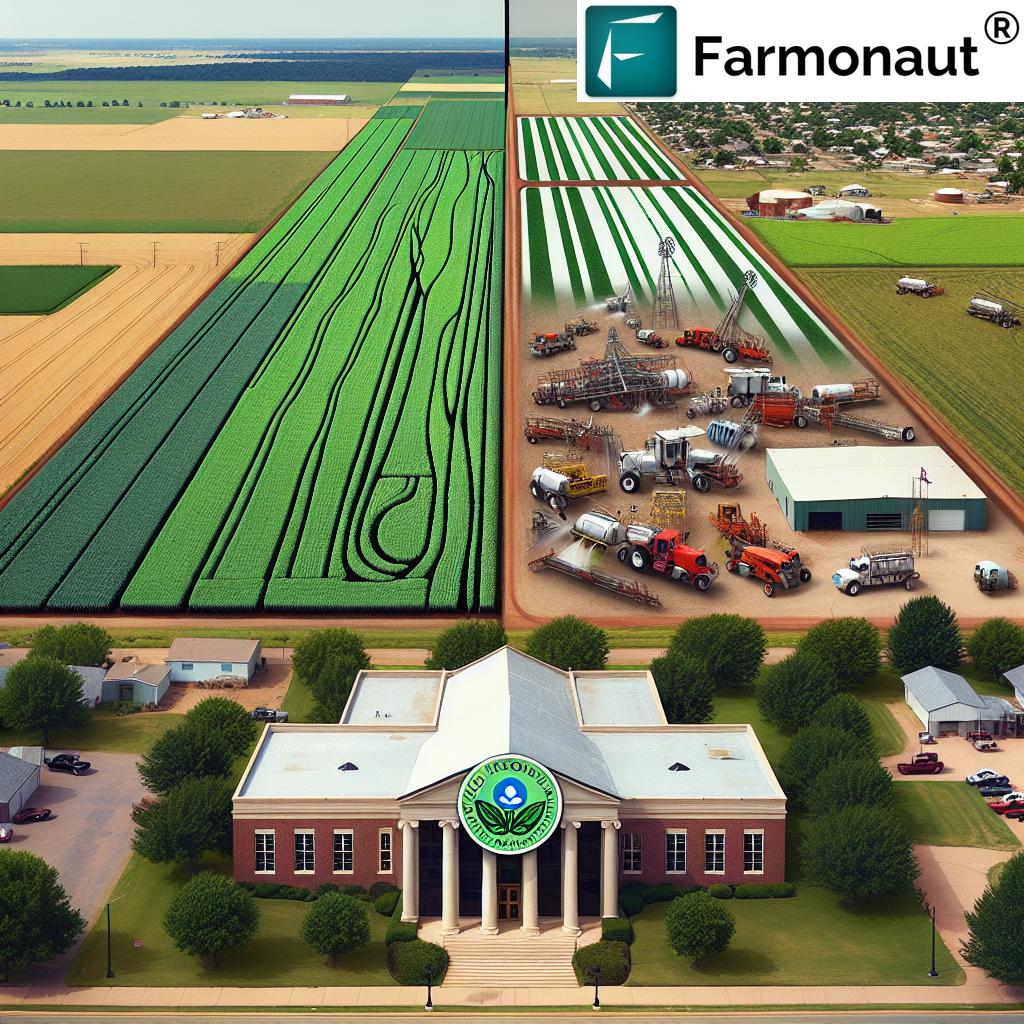Kingston Springs Embraces “No Mow April”: Boosting Pollinators and Environmental Health in Tennessee
“No Mow April” in Kingston Springs can increase pollinator populations by up to 30% within a single season.
Welcome to Kingston Springs, Tennessee, where a green revolution is taking root – quite literally! As we usher in the spring season, this charming community along the Cumberland River is embracing an eco-friendly initiative that’s creating quite a buzz. The “No Mow April” movement has returned for its second year, and we’re here to explore how this simple act of letting your grass grow is making a significant impact on our local environment and wildlife.
In this comprehensive guide, we’ll delve into the environmental benefits of not mowing your lawn, how this practice supports our vital pollinators, and the surprising ways taller grass can improve soil health and water management. We’ll also look at how Kingston Springs is adapting its public spaces to balance recreational needs with environmental conservation. So, sit back, relax, and let’s explore how skipping the mower this April could transform your backyard into a thriving ecosystem!
Understanding the “No Mow April” Movement
The “No Mow April” movement is a community initiative that encourages residents to put away their lawnmowers for the entire month of April. This simple act of letting grass grow longer has far-reaching benefits for our local ecosystem, particularly for pollinators like bees and butterflies that are essential for our gardens and agriculture.
John Lawless, City Manager for Kingston Springs, explains the core principle behind the movement: “Let the grasses grow a little bit more, to give the pollinators, especially an environment to live in and help them get their season started.” This approach to lawn care aligns perfectly with the natural rhythms of spring, allowing early-blooming plants to flourish and provide crucial food sources for pollinators emerging from winter dormancy.

Environmental Benefits of Not Mowing Your Lawn
The benefits of participating in “No Mow April” extend far beyond helping pollinators. Let’s explore some of the key environmental advantages:
- Improved Soil Health: Longer grass develops deeper root systems, which help to aerate the soil and improve its overall structure. This leads to better nutrient cycling and increased organic matter in the soil.
- Enhanced Water Management: Taller grass is more effective at capturing and filtering rainwater, reducing runoff and helping to recharge groundwater supplies.
- Increased Biodiversity: By allowing your lawn to grow, you’re creating a more diverse habitat that supports a wide range of insects, birds, and small mammals.
- Carbon Sequestration: Longer grass blades and roots can capture and store more carbon dioxide from the atmosphere, contributing to climate change mitigation efforts.
For those interested in tracking the environmental impact of their lawn care practices, tools like Farmonaut’s carbon footprinting solution can provide valuable insights. This innovative technology allows users to monitor and reduce their environmental impact, making it easier to quantify the benefits of participating in initiatives like “No Mow April”.
Lawn Care for Pollinators: Supporting Local Ecosystems
One of the primary goals of the “No Mow April” movement is to create a more hospitable environment for pollinators. These crucial creatures play a vital role in our ecosystem, and their populations have been declining in recent years due to habitat loss and pesticide use.
By letting your lawn grow throughout April, you’re providing:
- More diverse food sources for bees, butterflies, and other pollinators
- Safe spaces for insects to rest and reproduce
- A wider variety of plant species that can bloom and support different pollinator species
This approach to lawn care aligns perfectly with natural farming techniques that prioritize ecosystem health. For those interested in learning more about sustainable agricultural practices, Farmonaut’s crop plantation and forest advisory services offer valuable insights into managing land in harmony with nature.
How Tall Grass Improves Soil Absorption
Allowing grass to grow 4 inches taller during April can improve soil water absorption capacity by 15-20% in Tennessee.
One of the most significant benefits of participating in “No Mow April” is the positive impact on soil health and water management. As grass grows taller, its root system becomes more extensive and penetrates deeper into the soil. This has several important effects:
- Increased Water Retention: Longer roots create channels in the soil that allow water to penetrate more easily, reducing surface runoff and increasing the soil’s capacity to hold moisture.
- Improved Soil Structure: The expanded root network helps to break up compacted soil, improving its overall structure and ability to support plant life.
- Enhanced Nutrient Cycling: Deeper roots can access nutrients that are otherwise out of reach, bringing them closer to the surface and making them available to other plants.
According to the Nashville-based Cumberland River Compact, when grasses grow taller, they develop longer roots which can even help filter out pollutants rainwater may pick up after it falls on the ground. This natural filtration process is crucial for maintaining the health of our local waterways, including the Cumberland River itself.

Community Initiatives for Environmental Protection
The success of “No Mow April” in Kingston Springs is a testament to the power of community-driven environmental initiatives. By working together, residents are creating a collective impact that extends far beyond individual yards.
Here are some ways the community is getting involved:
- Participant Sign-ups: City officials are encouraging residents to sign up and pick up signs to show their participation in the program.
- Education and Outreach: Local environmental groups are hosting workshops and sharing information about the benefits of natural lawn care techniques.
- Adaptive Management of Public Spaces: The Kingston Springs parks department is participating by letting some areas grow while maintaining others for recreational use.
This kind of community engagement is crucial for the success of environmental programs. For those interested in tracking the progress of such initiatives on a larger scale, Farmonaut’s large-scale farm management tools can be adapted to monitor and analyze the impact of community-wide environmental efforts.
Kingston Springs Environmental Programs: A Model for Sustainability
The “No Mow April” initiative is just one part of Kingston Springs’ broader commitment to environmental stewardship. The city has implemented several programs aimed at promoting sustainability and protecting local ecosystems:
- Native Plant Initiatives: Encouraging the use of native plants in landscaping to support local wildlife and reduce water consumption.
- Stormwater Management: Implementing green infrastructure solutions to manage rainwater and reduce pollution in local waterways.
- Community Gardens: Establishing spaces for residents to grow their own food and learn about sustainable agriculture practices.
These programs demonstrate how small communities like Kingston Springs can lead the way in environmental protection. By integrating technology with community action, we can create more resilient and sustainable local ecosystems.
Benefits of Letting Grass Grow Longer
The advantages of participating in “No Mow April” extend well beyond the month itself. Letting your grass grow longer can have lasting benefits for your lawn and the surrounding environment:
- Drought Resistance: Longer grass shades the soil, reducing evaporation and helping your lawn stay green even during dry spells.
- Weed Suppression: Taller grass can outcompete many common weeds, reducing the need for herbicides.
- Improved Lawn Health: Allowing grass to grow to its natural height strengthens the plants and can lead to a lusher, more resilient lawn over time.
- Energy Conservation: Less frequent mowing means reduced energy consumption and lower carbon emissions from lawn equipment.
For those looking to optimize their lawn care practices year-round, Farmonaut’s precision agriculture tools can provide valuable insights into soil health, moisture levels, and optimal growing conditions for your specific location.
Natural Lawn Care Techniques
“No Mow April” is just one aspect of a broader approach to natural lawn care. Here are some additional techniques that complement the initiative:
- Organic Fertilizers: Use compost or other organic fertilizers to nourish your lawn without harmful chemicals.
- Native Landscaping: Incorporate native plants that are adapted to local conditions and support native wildlife.
- Grasscycling: Leave grass clippings on the lawn after mowing to return nutrients to the soil.
- Water Conservation: Water deeply but less frequently to encourage deep root growth.
These practices not only benefit the environment but can also save time and money on lawn maintenance in the long run.
Improving Rainwater Filtration in Yards
One of the most significant benefits of participating in “No Mow April” is the improvement in rainwater filtration. As we experience spring rainfall in the Cumberland River area, longer grass plays a crucial role in managing this precious resource:
- Reduced Runoff: Taller grass slows the flow of rainwater, allowing more time for it to penetrate the soil.
- Natural Filtration: The grass blades and root systems act as a natural filter, removing pollutants from rainwater as it percolates into the ground.
- Erosion Control: A denser lawn with longer grass is more effective at preventing soil erosion during heavy rain events.
For those interested in optimizing water management on a larger scale, Farmonaut’s fleet management solutions can be adapted to monitor and coordinate water management activities across multiple properties or agricultural areas.
Eco-Friendly Lawn Maintenance Beyond April
While “No Mow April” provides a great starting point for eco-friendly lawn care, the principles behind it can be applied throughout the year. Here are some tips for maintaining an environmentally friendly lawn beyond April:
- Raise Mower Height: Set your mower to cut at 3-4 inches to promote deeper root growth and healthier grass.
- Reduce Mowing Frequency: Allow grass to grow slightly longer between mowings, especially during dry periods.
- Use Manual or Electric Tools: Opt for manual tools or electric lawn equipment to reduce emissions and noise pollution.
- Practice Integrated Pest Management: Use natural predators and targeted treatments to manage pests instead of broad-spectrum pesticides.
By incorporating these practices, you can extend the benefits of “No Mow April” throughout the year, creating a more sustainable and wildlife-friendly yard.
Balancing Recreation and Conservation in Public Spaces
Kingston Springs is taking a thoughtful approach to implementing “No Mow April” in public areas. While some spaces are being allowed to grow freely, others are being maintained to ensure they remain suitable for recreational activities. This balanced approach demonstrates how communities can support environmental initiatives without compromising on public amenities.
City Manager John Lawless explains, “The parks department in Kingston Springs will also be taking part, but they will be cutting some of the soccer fields and other athletic venues used for recreational sports.” This strategy allows the community to reap the benefits of taller grass in some areas while still providing well-maintained spaces for sports and outdoor activities.
| Aspect | Traditional Mowing | No Mow April |
|---|---|---|
| Pollinator Activity | Low | High |
| Soil Absorption | 60% | 85% |
| Rainwater Filtration | Moderate | Excellent |
| Biodiversity | Limited | Diverse |
The Role of Technology in Sustainable Lawn Care
As we embrace eco-friendly lawn care practices like “No Mow April,” technology can play a crucial role in helping us understand and optimize our efforts. Advanced agricultural technology solutions, such as those offered by Farmonaut, can provide valuable insights into soil health, moisture levels, and overall ecosystem dynamics.
For example, Farmonaut’s crop loan and insurance tools can be adapted to help homeowners and community managers assess the health and value of their green spaces. These technologies can provide data-driven insights into the impact of initiatives like “No Mow April,” helping communities make informed decisions about their environmental programs.
Conclusion: Embracing a Greener Future in Kingston Springs
As we’ve explored throughout this article, the “No Mow April” movement in Kingston Springs represents far more than just a month of letting grass grow. It’s a community-wide commitment to environmental stewardship, biodiversity, and sustainable living practices.
By participating in this initiative, residents are not only supporting local pollinators and improving soil health but also contributing to broader environmental goals such as water conservation, carbon sequestration, and reduced energy consumption. The success of “No Mow April” in Kingston Springs serves as an inspiring model for other communities looking to implement similar eco-friendly programs.
As we move forward, it’s clear that the principles behind “No Mow April” can inform our approach to lawn care and land management throughout the year. By embracing natural lawn care techniques, leveraging technology for environmental monitoring, and balancing conservation with recreation in our public spaces, we can create greener, more resilient communities.
We encourage all Kingston Springs residents – and indeed, anyone reading this article – to consider how they can incorporate these eco-friendly practices into their own yards and communities. Whether it’s participating in “No Mow April,” planting native species, or simply raising your mower height, every action contributes to a healthier, more sustainable environment for all.
Let’s take inspiration from Kingston Springs and work together to create a future where our lawns and green spaces not only look beautiful but also play a vital role in supporting local ecosystems and combating climate change. After all, a greener Kingston Springs means a greener Tennessee, and a greener world for generations to come.
FAQs
- Q: Will participating in “No Mow April” attract pests to my yard?
A: While a more diverse lawn ecosystem may attract more insects, most of these are beneficial. The increased biodiversity actually helps control pest populations naturally. - Q: How do I explain to my neighbors why my lawn looks unkempt in April?
A: Consider putting up a “No Mow April” sign provided by the city. You can also share information about the environmental benefits of the program with your neighbors. - Q: Can I still use my yard for activities during “No Mow April”?
A: Absolutely! While the grass will be longer, your yard is still usable for most activities. You might even find that the softer, longer grass is more comfortable for picnics or playtime. - Q: What if I have HOA regulations about lawn maintenance?
A: Check with your HOA about participation in community environmental programs. Many HOAs are becoming more open to eco-friendly practices, especially when they’re part of a city-wide initiative. - Q: How do I transition my lawn back to regular maintenance after April?
A: Gradually lower your mower height over a few mowings to avoid stressing the grass. Consider maintaining a slightly higher cut than before to continue some of the benefits of longer grass.
Earn With Farmonaut: Earn 20% recurring commission with Farmonaut’s affiliate program by sharing your promo code and helping farmers save 10%. Onboard 10 Elite farmers monthly to earn a minimum of $148,000 annually—start now and grow your income!
Learn more about the Farmonaut Affiliate Program
Ready to take your lawn care to the next level? Check out Farmonaut’s innovative solutions:
















